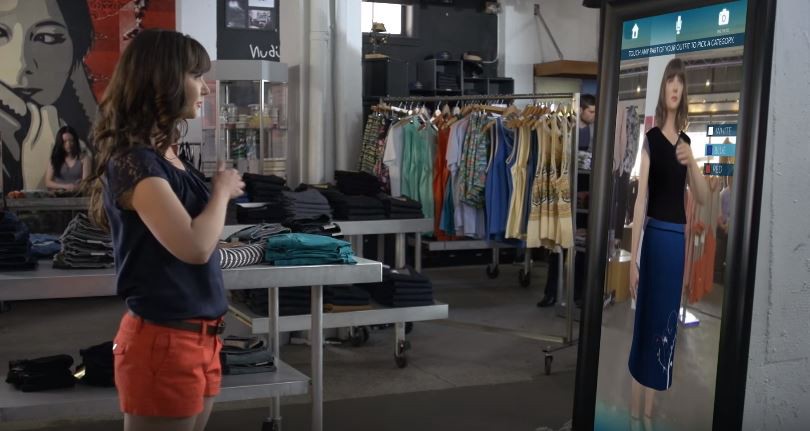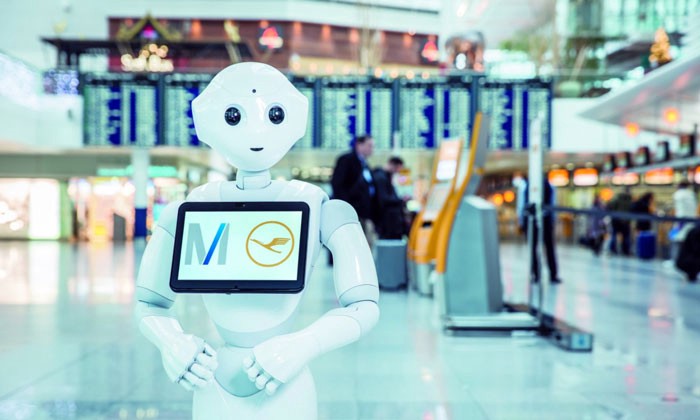Most retailers have been focusing on improving their online presence and rethinking the shopping experience of customers on the internet. Some clothing retailers, however, have decided to rethink the in-store experience and have tried to leverage digital technologies to, again, increase the relevance of brick and mortar stores. Virtual mirrors have been introduced by chains such as Tommy Hilfiger to simplify the process for shoppers.
A shopper brings a piece of clothing in front of a mirror and scans the barcode. The system recognizes the item and overlays the captured image of the user with the item of clothing. The shopper is now shown his virtual appearance with the outfit, which adapts according to his movements. Outfit sizes, colors, and combinations can also be changed with the push of a button. The lighting of the dressing room can be adapted to allow the user to try each combination in different settings. Furthermore, the customer has the opportunity to access the complete inventory catalog of the stores, usually available only to online users. The technology also offers complimentary suggestions to each item, which could increase the customers’ willingness to engage in additional purchases.
The introduction of this technology comes as a response to the challenge that online shoppers face when evaluating the sizes of items.
Retailers can benefit in various ways. Primarily, damage to inventory is reduced as items are only taken out of stock when customers purchase each item. Secondly, stores can use vast amounts of customer data to predict sales based on the levels of engagement. This improves the company’s marketing capabilities as customers can be targeted more reliably.
In my opinion, this technology is a great addition to traditional retail stores as people still enjoy going into stores to be personally consulted and can physically try on each item. This technology, paired with a strong online presence can improve a company’s brand.
https://hackernoon.com/virtual-mirror-the-future-of-interaction-95755b0d3d60


